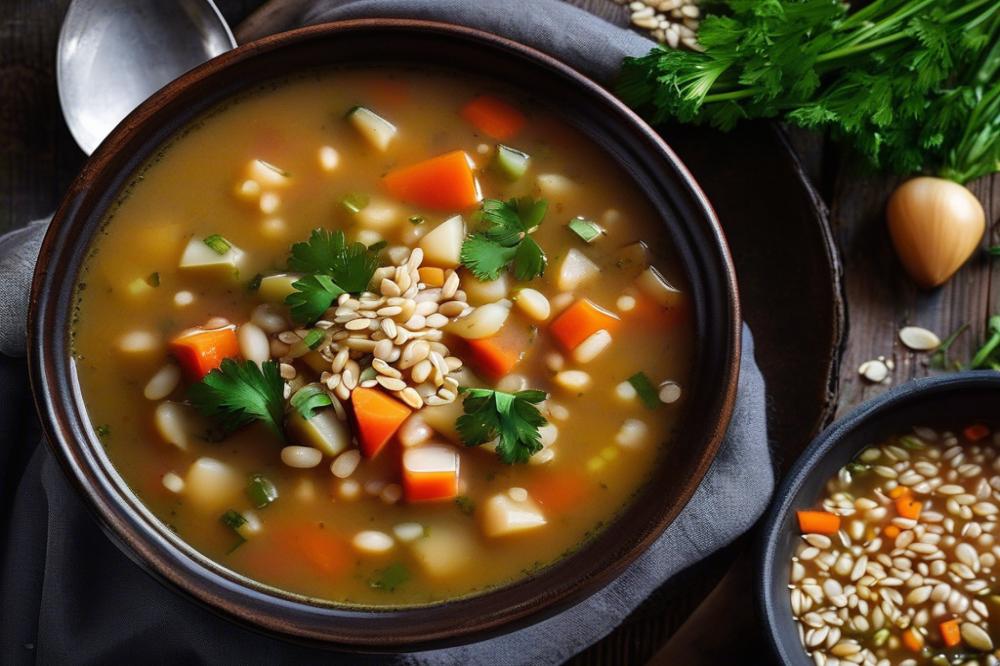Introduction
The Alentejo region, located in the heart of Portugal, is known for its vast landscapes and rich agricultural history. Filled with rolling hills, wineries, and fields of cork oaks, this area produces many local ingredients that shape its distinctive culinary identity. The atmosphere embodies the essence of simplicity and rustic charm, contributing to the warmth of its food. Alentejo cuisine is celebrated for hearty, satisfying meals that draw upon traditional recipes passed down through generations.
A prime example of this culinary heritage is a pork dish called Carne de Porco com Migas, which showcases the region’s love for bold flavors and comfort food. This dish highlights the region’s agricultural bounty and is a beloved part of communal meals among families and friends. In essence, it serves as a testament to how Alentejo’s history intersects with its soul food.
Local ingredients play a pivotal role in Portuguese food. Meat, particularly pork, is a staple in many savory dishes. The incorporation of bread crumbs into this traditional recipe is both practical and delicious, making use of day-old bread, a common item in many households. Home cooking thrives in this area, where meals are often crafted with care and attention to detail. Comfort food resonates deeply in Portuguese culture, inviting people to gather and create lasting memories around the table.
Carne de Porco com Migas

The pork dish known as Carne de Porco com Migas holds a special place in Alentejo. This flavorful meal showcases the local ingredients that define the region’s culinary heritage. Originating from traditional recipes, this dish reflects the history and culture of the people who have prepared it for generations. It is often considered comfort food, warming the hearts and souls of those who enjoy it.
At the heart of this dish lies the savory combination of marinated pork and crispy bread crumbs. The meat is typically seasoned with garlic, paprika, and herbs, lending it a rich and robust flavor. Bread crumbs are then mixed with broth, resulting in a moist yet slightly crunchy texture. Together, these elements create a delightful contrast that enhances the overall dining experience.
This recipe has deep roots in home cooking traditions across the Alentejo region. Families often gather to prepare and share this meal, reinforcing the bond between generations. The process is communal, allowing for collaboration in the kitchen. Sharing a hearty plate of Carne de Porco com Migas fosters a sense of togetherness and pride in local customs.
Dining on this traditional Portuguese food is more than just about satisfaction. It is a blend of flavors that tells the story of the land and its people. Celebrating the use of seasonal ingredients, this dish connects diners to the agricultural practices of the region. The hearty nature of the meal makes it ideal for family gatherings and festive occasions, further emphasizing its significance in local culture.
Ingredients and Quantities

When preparing this traditional dish, it is essential to gather the right ingredients to capture the essence of Alentejo’s culinary heritage. Begin with 600 grams of pork, preferably choosing either pork shoulder or pork belly for their rich flavors and suitable fats. This pork dish forms the heart of the recipe, contributing tenderness and depth.
Next, locate 250 grams of rustic bread. Using stale or day-old bread adds a delightful texture to the meal. For an aromatic touch, you will need four cloves of garlic. Their fragrance enhances the savory notes in the dish.
Olive oil is a key ingredient and requires 100 milliliters. This ingredient not only adds richness but also helps to sauté the garlic to perfection. Paprika, one tablespoon of it, brings a vibrant color and a hint of spice, evoking the flavors of Portuguese food.
Seasoning is vital, so keep salt and black pepper on hand to taste. These elements bring the dish together harmoniously. Water is also necessary; you will need about 500 milliliters to aid in cooking the pork thoroughly.
Finally, don’t forget fresh cilantro. This herb will serve as a garnish, lending brightness to your dish. The combination of these local ingredients makes it a comforting meal that reflects home cooking traditions. With these components in place, you are ready to embark on creating Carne de Porco com Migas, a delightful representation of savory dishes in the Alentejo region.
Cooking Instructions

Step-by-Step Method for Preparing Carne de Porco com Migas
Start by gathering your ingredients. Fresh pork cuts work best, preferably from the region’s local farmers. A mix of shoulder and belly enhances flavor. Begin by marinating the pork. Use a blend of garlic, paprika, salt, and pepper for a robust taste. Allow the meat to soak in these flavors for at least an hour. For an even deeper infusion, let it sit overnight in the refrigerator.
Next, heat a large pan over medium-high heat. Add olive oil to the pan. Once it shimmers, sear the marinated pork until it’s browned on all sides. This step locks in the juices. After achieving a nice crust, lower the heat and let it simmer. Stir occasionally while you cook. This process usually takes about 30 to 40 minutes. Keep an eye on the garlic, as it can burn and turn bitter.
While the pork is cooking, prepare the migas. In another skillet, heat more olive oil. Add chopped onions and sauté until translucent. Then, add the bread crumbs. Freshly baked bread adds texture and flavor. Gradually pour in water, just enough to moisten the mixture. Stir constantly to prevent it from sticking. The goal is to create a soft, yet slightly crunchy texture that pairs well with the savory dish.
Once both components are ready, it’s time to combine them. Place the cooked pork on a serving platter and spoon the migas on the side. You can also mix them together for a more unified presentation. This traditional recipe is perfect for family gatherings or cozy dinners.
For serving suggestions, consider adding a touch of fresh herbs like parsley or coriander for color. A simple green salad rounds out the meal nicely. Pairing it with a glass of robust red wine enhances the experience. This dish embodies the comfort food essence of the Alentejo region, highlighting its culinary heritage with every bite.
Nutritional Information

Analyzing the key ingredients of this traditional pork dish reveals valuable nutritional information. Pork serves as the main protein source, offering significant amounts of protein, essential for muscle growth and repair. Alongside the meat, bread crumbs are a crucial component. They provide carbohydrates, which are important for energy.
Caloric content varies depending on the preparation style. Typically, a serving of Carne de Porco com Migas can contain approximately 400-600 calories. Protein content may reach around 25-30 grams per serving, while carbohydrates from the bread crumbs often contribute around 40 grams. Fat content primarily comes from the pork itself, which can be around 20-30 grams, depending on the cut and cooking method.
Vitamins found in this dish come from any accompanying vegetables, often included in the mix. Ingredients like garlic and onion enrich the dish with vitamins B6 and C. These nutrients play vital roles in energy metabolism and immune function.
Looking deeply, one notices that Portuguese food prioritizes local ingredients. This focus not only supports local economies but also enhances flavor. Comfort food like this often highlights the importance of home cooking, where families gather to share satisfying meals. Traditional recipes offer a glimpse into the culinary heritage of the Alentejo region, showcasing unique regional tastes.
Health aspects of savory dishes such as this pork dish reflect a balanced approach to nutrition. The combination of protein and carbohydrates can lead to sustained energy levels. Furthermore, traditional meals often involve slow cooking methods, which might preserve nutrients better when compared to fast food or heavily processed options.
While it’s important to enjoy these delicious meals, moderation remains key. Including a variety of food groups in one’s diet can help maintain overall health. As with many traditional dishes, savoring the rich flavors and textures brings enjoyment while allowing for mindful eating.
Serving Suggestions and Pairings
When enjoying this flavorful pork dish, several side dishes and beverages can enhance the experience. Traditional accompaniments from the Alentejo region often take center stage. For example, adding roasted vegetables or a fresh green salad brings brightness to the meal.
Another delightful option includes serving migas alongside the pork. These bread crumbs absorb the savory juices, enriching every bite. A hearty bean salad can also provide a nice contrast, showcasing the local ingredients in a light and refreshing way.
Beverage Pairings
Pairing the right beverage can elevate the dinner experience. Traditional Portuguese food often goes wonderfully with local wines, such as a robust Alentejan red. The acidity in these wines complements the rich flavors of the meat. For a non-alcoholic choice, a refreshing mineral water or a homemade lemonade can work nicely.
Ideal Occasions
This comfort food is perfect for gatherings and feasts. Families often serve Carne de Porco com Migas during celebrations or family reunions. It also makes a satisfying meal for a cozy weekend dinner. Home cooking can create a warm atmosphere perfect for friends and family.
Embracing the culinary heritage of Alentejo is essential when serving this dish. It would be great to enjoy it during traditional festivals or holidays. Each bite offers a taste of history, making every occasion feel special.
Embracing Alentejo’s Culinary Treasure
Carne de Porco com Migas holds a special place in Portuguese food culture. This pork dish represents more than just a meal; it embodies centuries of tradition and community values. Family gatherings often include this dish, making it a staple at celebrations and everyday dinners alike. The combination of savory pork and the rich, flavorful bread crumbs highlights local ingredients that have been cherished for generations.
Culinary experiences in the Alentejo region offer a journey through history and flavor. Visitors can explore the rustic charm of this area and discover many other local dishes that reflect its agricultural heritage. The region is known for its high-quality ingredients, from the fields of wheat to the herds of pigs. Engaging with this culinary culture enriches one’s understanding of Portugal’s rich gastronomy.
Cooking together can foster bonds among family and friends. Traditional recipes, like this cherished dish, often inspire storytelling and laughter in the kitchen. Sharing the cooking process allows people to connect with their heritage, creating memories that last a lifetime. In the end, understanding the cultural significance of culinary practices enhances our appreciation of food. Enjoying a meal made from generations-old recipes can bring immense joy and satisfaction.



